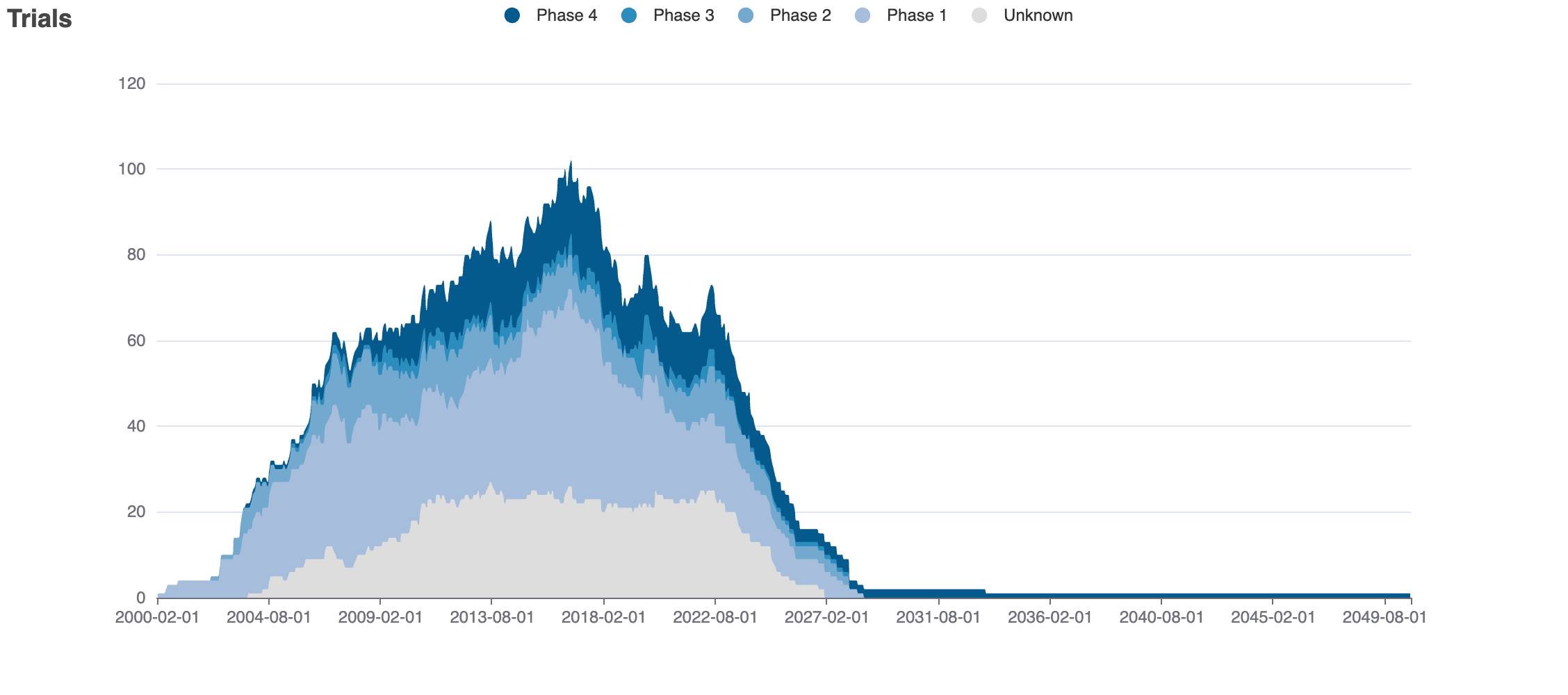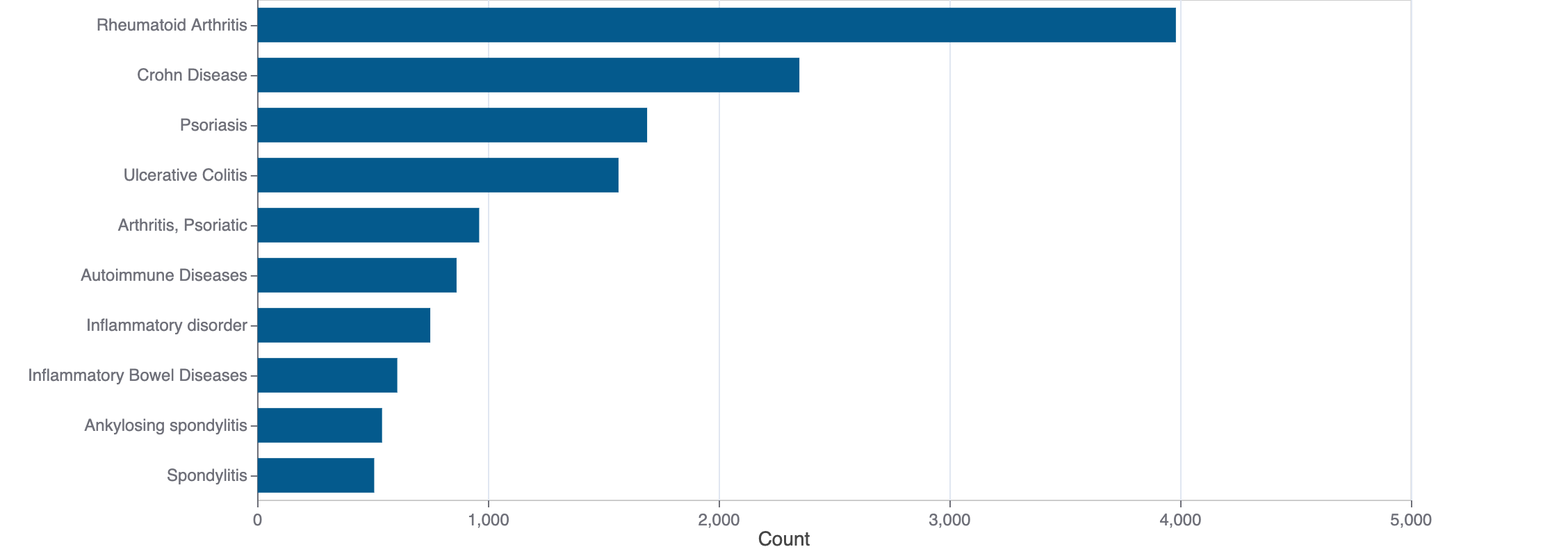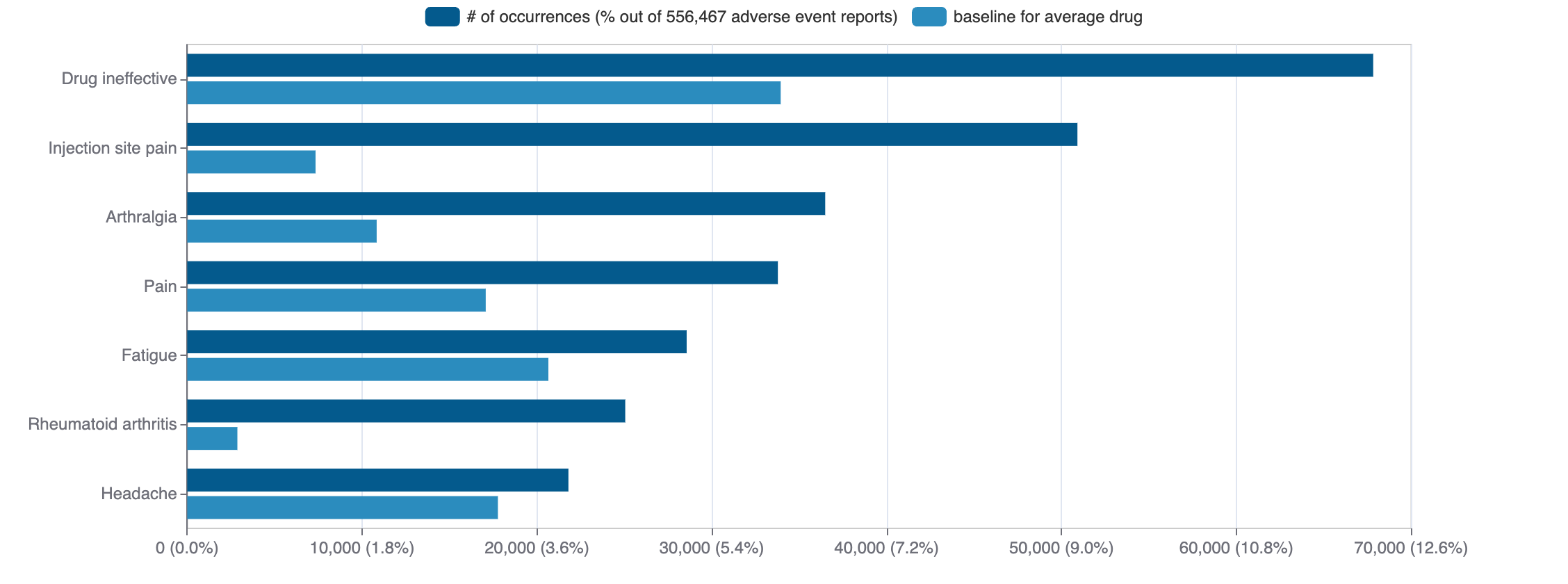Agomelatine
Thymanax, Valdoxan (agomelatine) is a small molecule pharmaceutical. Agomelatine was first approved as Valdoxan on 2009-02-19. It has been approved in Europe to treat major depressive disorder. The pharmaceutical is active against melatonin receptor type 1B and melatonin receptor type 1A. In addition, it is known to target 5-hydroxytryptamine receptor 2A, 5-hydroxytryptamine receptor 2C, and 5-hydroxytryptamine receptor 2B.
Download report
Favorite
Commercial
Therapeutic Areas
Therapeutic Area | MeSH |
|---|---|
| mental disorders | D001523 |
Trade Name
FDA
EMA
No data
Drug Products
FDA
EMA
New Drug Application (NDA)
New Drug Application (NDA)
Abbreviated New Drug Application (ANDA)
Abbreviated New Drug Application (ANDA)
No data
Labels
FDA
EMA
No data
Indications
FDA
EMA
No data
Agency Specific
FDA
EMA
No data
Patent Expiration
No data
HCPCS
No data
Clinical
Clinical Trials
23 clinical trials
View more details

Mock data
Subscribe for the real data
Subscribe for the real data
Indications Phases 4
Indication | MeSH | Ontology | ICD-10 | Ph 1 | Ph 2 | Ph 3 | Ph 4 | Other | Total |
|---|---|---|---|---|---|---|---|---|---|
| Major depressive disorder | D003865 | EFO_0003761 | F22 | — | — | 8 | 3 | 1 | 12 |
| Schizophrenia | D012559 | EFO_0000692 | F20 | — | — | 1 | 2 | — | 3 |
| Depression | D003863 | F33.9 | — | — | 1 | 2 | — | 3 | |
| Parkinson disease | D010300 | EFO_0002508 | G20 | — | — | — | 1 | — | 1 |
| Chronobiology disorders | D021081 | — | — | — | 1 | — | 1 | ||
| Sleep wake disorders | D012893 | G47 | — | — | — | 1 | — | 1 | |
| Psychotic disorders | D011618 | F20.81 | — | — | — | 1 | — | 1 | |
| Paranoid schizophrenia | D012563 | F20.0 | — | — | — | 1 | — | 1 | |
| Ischemic stroke | D000083242 | — | — | — | 1 | — | 1 |
Indications Phases 2
Indication | MeSH | Ontology | ICD-10 | Ph 1 | Ph 2 | Ph 3 | Ph 4 | Other | Total |
|---|---|---|---|---|---|---|---|---|---|
| Obsessive-compulsive disorder | D009771 | EFO_0004242 | F42 | — | 1 | — | — | — | 1 |
Indications Phases 1
Indication | MeSH | Ontology | ICD-10 | Ph 1 | Ph 2 | Ph 3 | Ph 4 | Other | Total |
|---|---|---|---|---|---|---|---|---|---|
| Hepatic insufficiency | D048550 | 1 | — | — | — | — | 1 | ||
| Renal insufficiency | D051437 | HP_0000083 | N19 | 1 | — | — | — | — | 1 |
Indications Without Phase
Indication | MeSH | Ontology | ICD-10 | Ph 1 | Ph 2 | Ph 3 | Ph 4 | Other | Total |
|---|---|---|---|---|---|---|---|---|---|
| Depressive disorder | D003866 | EFO_1002014 | F32.A | — | — | — | — | 1 | 1 |
| Fibromyalgia | D005356 | EFO_0005687 | M79.1 | — | — | — | — | 1 | 1 |
Epidemiology
Epidemiological information for investigational and approved indications
View more details
Drug
General
| Drug common name | AGOMELATINE |
| INN | agomelatine |
| Description | Thymanax, Valdoxan (agomelatine) is a small molecule pharmaceutical. Agomelatine was first approved as Thymanax on 2009-02-19. It has been approved in Europe to treat major affective disorder 2. The pharmaceutical is active against melatonin receptor type 1A and melatonin receptor type 1B. In addition, it is known to target 5-hydroxytryptamine receptor 2B, 5-hydroxytryptamine receptor 2C, and 5-hydroxytryptamine receptor 2A. |
| Classification | Small molecule |
| Drug class | — |
| Image (chem structure or protein) | |
| Structure (InChI/SMILES or Protein Sequence) | COc1ccc2cccc(CCNC(C)=O)c2c1 |
Identifiers
| PDB | 6ME5 |
| CAS-ID | 138112-76-2 |
| RxCUI | — |
| ChEMBL ID | CHEMBL10878 |
| ChEBI ID | — |
| PubChem CID | 82148 |
| DrugBank | DB06594 |
| UNII ID | 137R1N49AD (ChemIDplus, GSRS) |
Target
Alternate
HTR2A
HTR2A
HTR2C
HTR2C
HTR2B
HTR2B
Organism
Homo sapiens
Gene name
HTR2A
Gene synonyms
HTR2
NCBI Gene ID
Protein name
5-hydroxytryptamine receptor 2A
Protein synonyms
5-HT2 receptor, 5-hydroxytryptamine (serotonin) receptor 2A, G protein-coupled, serotonin 5-HT-2A receptor, Serotonin receptor 2A
Uniprot ID
Mouse ortholog
Htr2a (15558)
5-hydroxytryptamine receptor 2A (P35363)
Variants
Clinical Variant
No data
Financial
No data
Trends
PubMed Central
Top Terms for Disease or Syndrome:

Mock data
Subscribe for the real data
Subscribe for the real data
Additional graphs summarizing 2,725 documents
View more details
Safety
Black-box Warning
No Black-box warning
Adverse Events
Top Adverse Reactions

Mock data
Subscribe for the real data
Subscribe for the real data
7,385 adverse events reported
View more details
Premium feature
Learn more about premium features at pharmakb.com
Learn more
